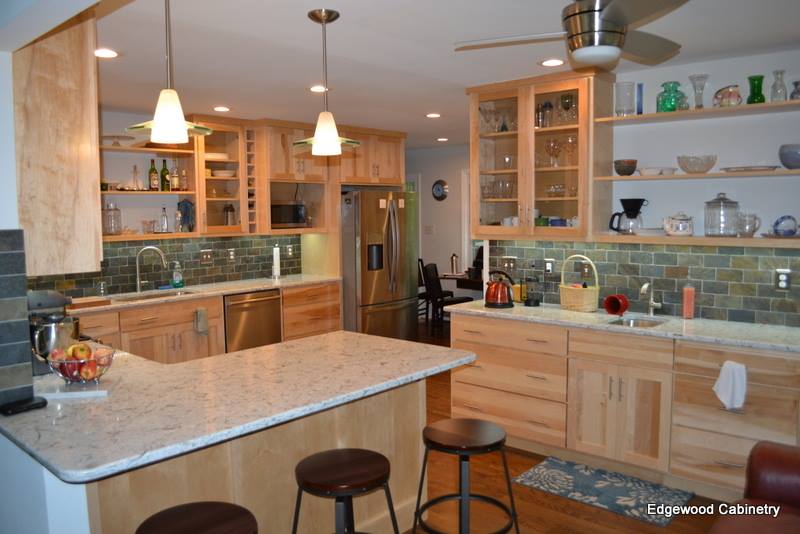The finish you choose for your cabinets drastically impacts your kitchen’s overall appearance. That’s why choosing whether or not to paint your cabinets is a bigger decision than many people realize. It’s important to think through all the aspects, from your visual preference to future maintenance. Let’s talk about the pros and cons of painting cabinets.
Pro: You Have More Color Choice When Painting Cabinets
In comparison to staining, you have more color choice when painting cabinets. In fact, it’s usually possible to match any color you wish, so the sky is the limit when it comes to painting custom cabinets. And even if you stick to a company’s normal list of colors, there’s typically plenty of variety for most homeowners. Whether you are purchasing new cabinets or refinishing older cabinets, Edgewood Cabinetry is happy to work with you to bring your vision to life in any color you choose.
Con: It’s Often Difficult to Touch Up Painted Cabinets
Although painting cabinets gives you more color variety than staining them, it’s important to consider the upkeep you need in the future. For instance, if your toddler learns to decorate with permanent marker, your dog scratches a cabinet door, or you accidentally chip the paint, it’s often difficult to DIY the repair. You may not remember the particular shade of paint you need. Plus, you may have to purchase a far larger quantity of paint than you need. Additionally, because cabinet makers often spray paint on for an even finish, you can’t easily achieve the same results at home.
Pro: Painting Gives a Clean, Smooth Finish
If you want your cabinets to look smooth and sleek, painting them is the way to go. Since paint sticks to the surface of the wood, rather than sinking into the woodgrain, it’s the best choice if you want a clean finish. So, if you want your eye to travel smoothly along your kitchen instead of up and down the woodgrain of your cabinets, painting them gives you the aesthetic you’re looking for. There are also a variety of finishes within paint itself, so whether you want glossy modern cabinets or a more muted European-style finish, there’s a paint to match.
Con: Certain Species of Wood Work Better When Painting Cabinets
Although painting cabinets allows a smooth finish, it only works with certain species of wood. For example, maple and birch are a dream to paint. They offer smooth, nonporous surfaces that hold paint well and don’t show the woodgrain. On the other hand, oak has a prominent grain that shows through paint. And while pine wood is smooth, it often contains visible knots. However, if you want to refinish and paint old cabinets, we have methods to improve the appearance of any wood species.
Pro or Con: Painting Cabinets Hides Unique Features
Painting your cabinets hides, or at least mutes, unique features of the wood. For example, imperfections, like knots and wormholes, and the woodgrain itself either aren’t visible or are more difficult to see. So, depending on your preference, that’s either a pro or a con of painting cabinets. If you prefer smooth, unblemished surfaces, it’s a definite pro. On the other hand, if you enjoy the charm of natural woodgrain, staining your cabinets is a better choice.
Let Edgewood Cabinetry Take the Hassle Out of Painting Cabinets
Painted cabinets are beautiful, but painting them yourself can be a headache. Instead, let Edgewood Cabinetry take the hassle out of painting your cabinets. Whether you are interested in purchasing custom cabinets or want to refinish your existing cabinets, we can help. We sit down with you to discuss your vision. Then, we work to make it a reality. And with decades of experience, we know how to get the results right. Contact us today to discuss your project.










